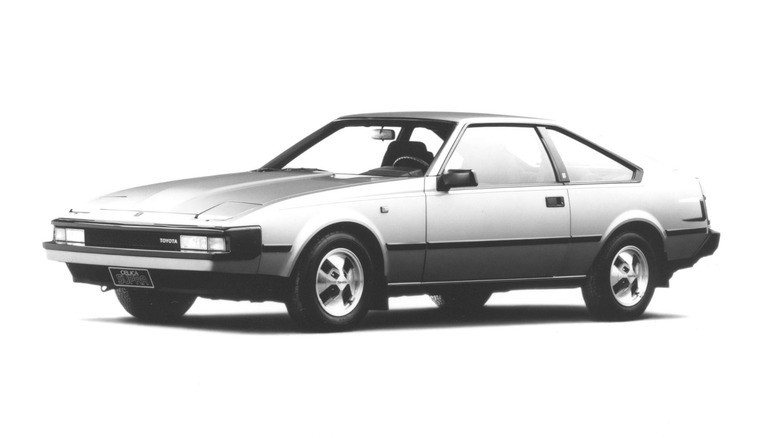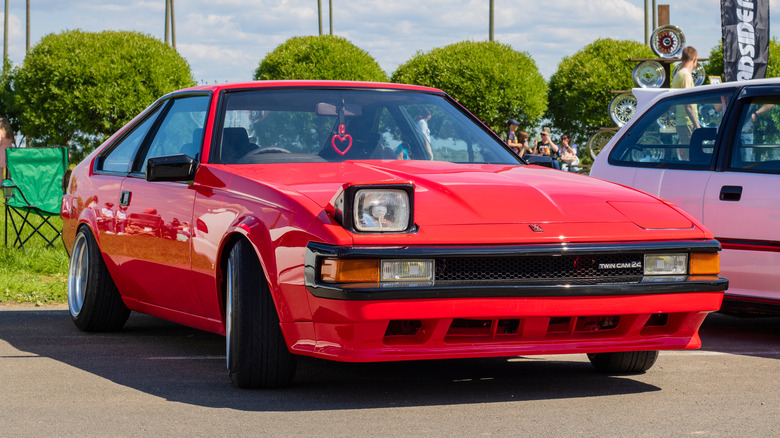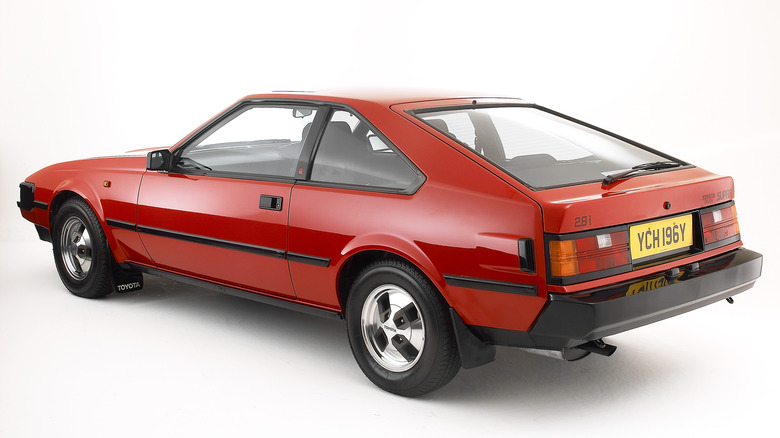What Made The 1982 Toyota Supra Such A Likeable Car?
There are very few names in the automotive industry that carry a legacy the way that the name "Supra" does. The Toyota Supra MK4 is widely considered to be the magnum opus in the nameplate's history — and one of the best Japanese sports cars of all time, for that matter — but the Supra began building its legendary reputation long before 1993. With that being said, the first-generation Celica Supra wasn't where the legend started. Despite being the car that ushered in electronic fuel injection and established the inline-six cylinder as the Supra's signature powerplant, the A40 Celica Supra wasn't nearly as impressive as its predecessors. Toyota still didn't know what the Supra was yet, but they were pretty sure they wanted it to be a luxury-focused GT car.
The second generation A60 Celica Supra came along in 1982 and nudged the model closer to the Ferrari killer we know the Mk4 to be in "Fast and Furious". In fact, the 1982 Supra was a Ferrari killer too, beating a Ferrari 308 in a 1984 Car and Driver test searching for the best handling import car. With chassis tuning from a Lotus engineer, independent rear suspension, and a modernized DOHC inline-six under the hood, the second-generation Celica Supra put the performance and GT cars of the time squarely in its sights while still maintaining the reliability, usability, and practicality that Toyota is known for. The 1982 Celica Supra did it so well that its formula informed all of the Supra models that followed.
It was the first Supra to take performance seriously
While the first generation Celica Supra was a luxury car with an identity crisis, Toyota split the personality of the second generation Supra into two different trim packages to avoid the Jack of all trades, master of none problem. The 1982 Supra came in either a luxury-oriented L-type variant or a performance-focused P-type variant. While the L-type did luxury well, it was the P-type that would go on to lay the framework for the Supra going forward.
Compared to the previous generation, the 1982 Supra was working with some much better hardware. To help in the handling department, the A60 Supra received independent semi-trailing arm rear suspension paired with front MacPherson struts. The modernized suspension setup made the A60 Supra more planted and balanced around corners compared to the earlier generation with a live rear axle. As a partial owner of Lotus, Toyota used all of the resources at their disposal to make the Supra the best driver's car possible. They called upon Roger Becker, the chassis engineer for both the Esprit and Elise, to handle the Supra's chassis dynamics.
The Supra's 5M-GE 2.8-liter DOHC inline-six was another plus for driver satisfaction. While it only made 145 horsepower initially — and 161 horsepower by 1986 – it was the engine's attitude that made it special. It came alive above 4,000 RPM, requiring a driver to push to get the most out of it. While the original A40 Supra Celica had a SOHC inline-six under the hood, the 5M-GE in the 1982 Supra was the true, modern straight-six ancestor to the Supra's most famous engines later down the line, including the 7M-GTE and the legendary 2JZ-GTE.
It was an easy car to live with
Pushing the Supra's legacy and sporty reputation to the side for a minute, the 1982 Supra was a fantastic car to live with compared to its competitors at the time. Despite moving in a more athletic direction, the A60 Supra was still considered a GT car. As a result, its contemporaries not only included performance cars like the Z28 Camaro, Pontiac Firebird, and the Mazda RX-7 but also luxury-focused GT cruisers like the Porsche 928 and Nissan 280ZX. The 1982 Supra could go toe-to-toe with all of them in terms of sheer performance while still providing just as luxurious of an experience.
The '82 Supra's interior was a fantastic place to exist, surrounded by quality upholstery and pinstripe accents. It featured nearly endless then-modern accouterments including cruise control, power windows, power locks, a sophisticated stereo system, and a quality A/C system making it a great daily driver. Speaking about the car's interior, Jean Lindamood, a journalist at Car and Driver, claimed that "from door to door, it's perhaps the most perfect orchestration of style, ergonomics, hardware, and craftsmanship (she'd) ever seen in a car."
Interior frills and a usable hatchback made the 1982 Supra a good sports car to live with in a practical sense. To compound those factors, it was still a Toyota and came with all of the benefits of that as well. In typical Toyota fashion, the 1982 Supra's 5M-GE engine is considered truly bulletproof, with only a few minor common issues even at high mileage. Even in the case of an engine issue, the 5M-GE was used in so many Toyota vehicles that parts are easy to find and cheap to replace, even 40+ years after the engine was released.


